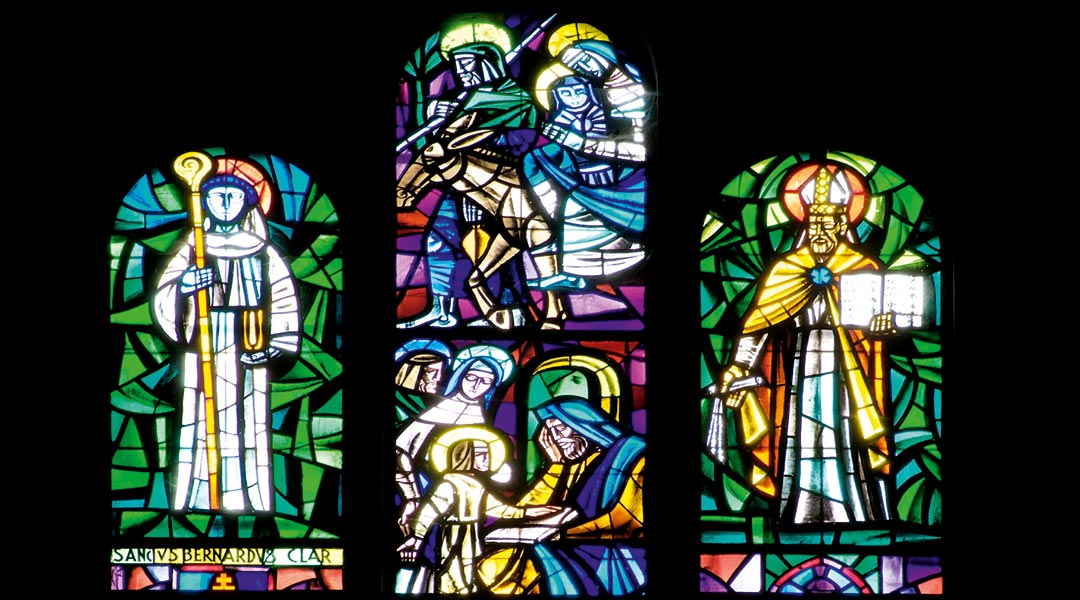
Dissecting the stained glass windows at the Manila Cathedral
Among the pivotal members of the Philippine Modernist Triumvirate formed by Victorio Edades in 1934, it was perhaps Galo Ocampo (1915-1985) who was the most attuned to the connection between faith and art. A graduate of the UP School of Fine Arts (1934), writer and early defender of Modernism, long-time mentor at the UST College of Fine Arts from the late Thirties to the Sixties; former Director of the National Museum; and sometime President of the AAP, Galo was already known for his paintings and research on Philippine Catholic art in the pre-War period, with his pioneering publication Philippine Churches and other Scenes (1937), which he illustrated himself.
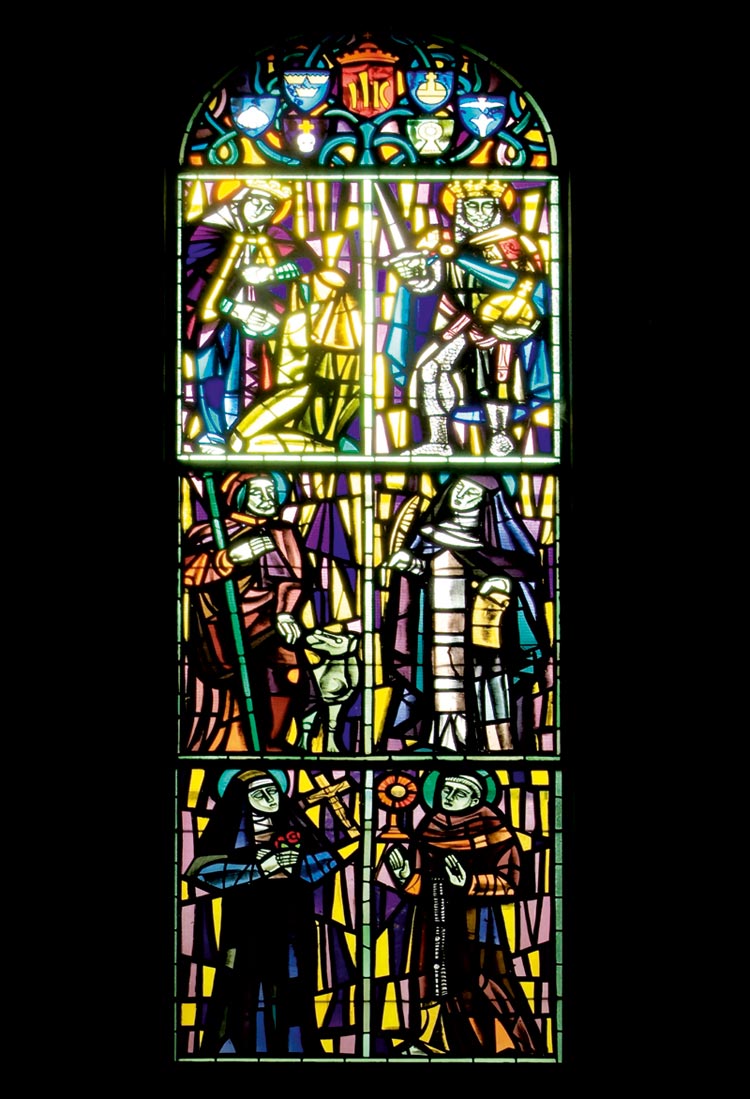
After the War, Galo Ocampo would intensify this affiliation with iconic Catholicism by focusing his Modernist style of painting inspired from Mexican Social Realism mixed with the Surrealism of Magritte to inaugurate his Flagellants series, ending in his Nuclear Ecce Homo in 1982. It also led the way to his pivotal contribution to the reconstruction of the devastated Manila Cathedral at Intramuros by designing its stained glass windows.
Supported by Manila archbishop Rufino Cardinal Santos, Galo took advanced studies in liturgical art at the Instituto Internationale de Arte Liturgica in Rome (1956). Working out his design ideas by painting on large cardboard sheets, Galo would then turn over his designs to the expert Italian glassmakers of the institute for translation into the difficult, demanding, and expensive process of stained-glass manufacturing, in which the medieval method of “pot glass” making (adding colouring metallic oxides to molten clear glass on ceramic pots at high heat) was still observed.
Finished in time for the grand inauguration of the Manila Cathedral (now called the Basilica Minor of the Immaculate Conception) on December 8, 1958, the designs by Galo Ocampo revolved around the Marian theme through which Catholicism in the Philippines was dedicated (the Cathedral itself being dedicated to Our Lady of the Immaculate Conception). Forming a band running the upper and lower parts of the nave, the apsis, ambulatories, transept, dome lantern, and north end facade containing its resplendent rose window, Galo divided the task following Gothic European cathedral iconographic programs focusing on the life, dogma, and attributes of the Virgin Mary.
READ MORE: The making of the all-steel Gothic Revival San Sebastian Basilica
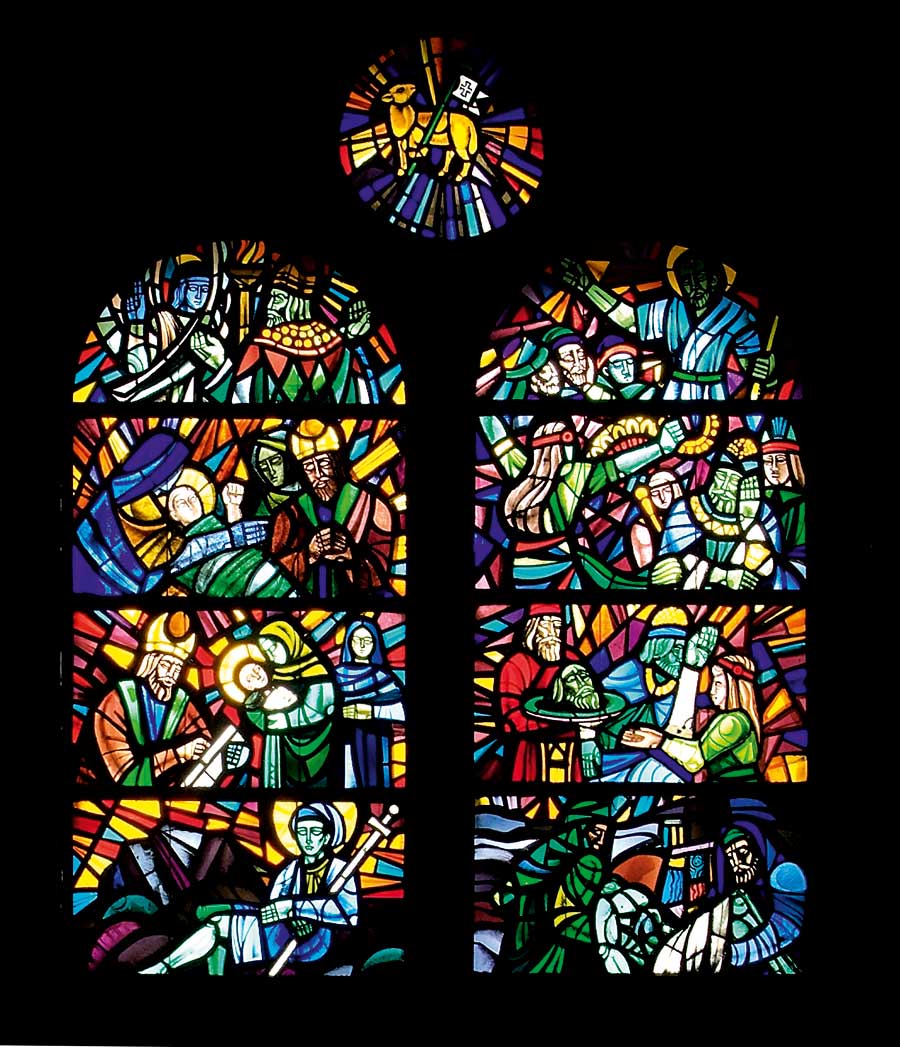
Ten groups of triple lancet windows forming the clerestory level of the nave each feature an episode of the life of Mary at the center flanked by pairs that depict saints known for their Marian reverence. The lateral aisles underneath them are illuminated by a series of eight round windows depicting the seven corporal works of mercy: to feed the hungry, to give drink to the thirsty, to clothe the naked, to shelter the homeless, to visit the sick, to visit the imprisoned, and to bury the dead (the eighth window features cubistic abstract patterns).
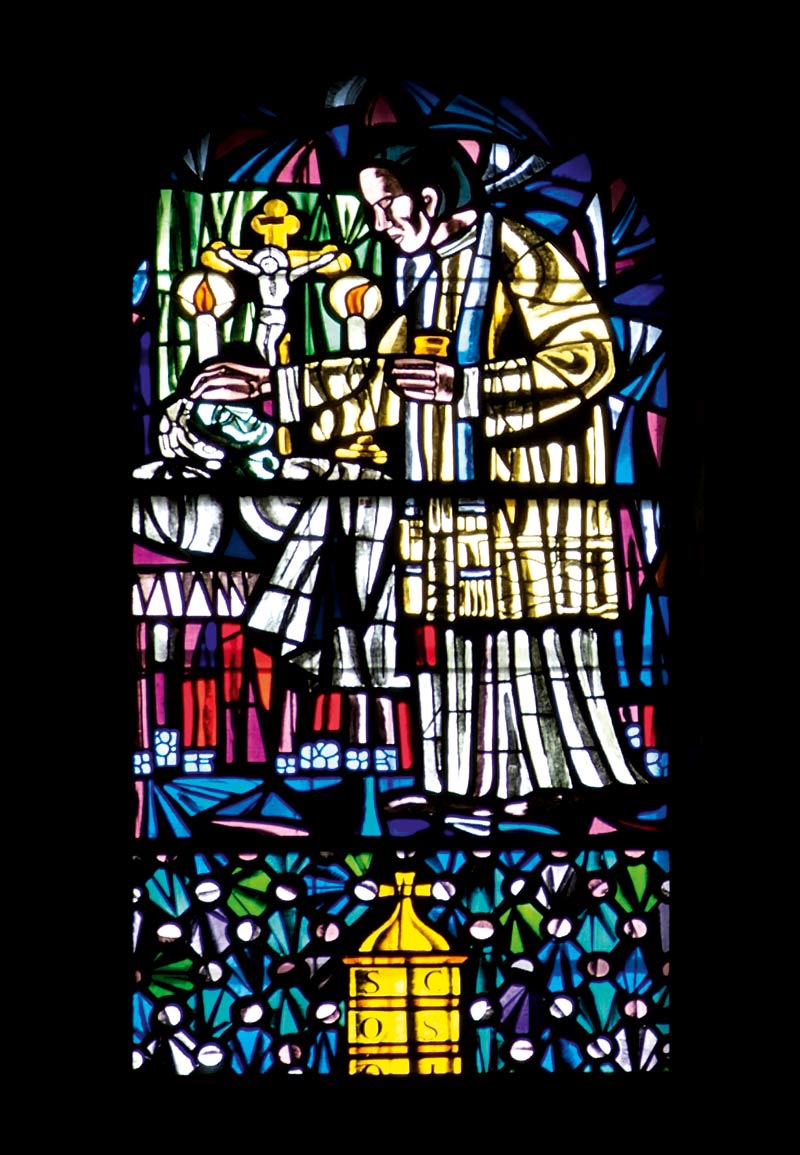
18 windows forming the attic of the apsis, in turn, feature the major Marian images found in the Philippines, including Our Lady of Peace and Good Voyage, of Expectation, of Consolation, of Loreto, of the Pillar, of Remedies, of “La Naval,” of the Abandoned, of Carmel, of the Miraculous Medal, of the Rule, of Montserrat, of Lourdes, of Peñafrancia, of Perpetual Help, of Fatima, of Sorrows, and of Nasalambao.
Two large windows open over the lateral walls, and are dedicated to the theme of Mary’s regality, depicting the six categories of blessed spirits under her patronage as invoked by the Lauretan Litanies; the Patriarchs; the Prophets; the Apostles; the Martyrs; the Confessors; and the Virgin, to which are added Mary’s titles of Queen of Peace and Queen of the Most Holy Rosary.
Transcribed on parchment and strewn with symbolic motives drawn from the whole Marian mystic flora, the windows are finally dominated by the central panels commemorating the Proclamation of the Dogma of her Assumption into Heaven. The lantern forming the dome’s drum features 16 windows of angels bearing the Marian titles as drawn from the Lauretan Litanies, the Song of Songs, the Ecclesiastes, and others.
READ MORE: This Binondo lumpia shop shows us that small businesses are Manila’s heritage too
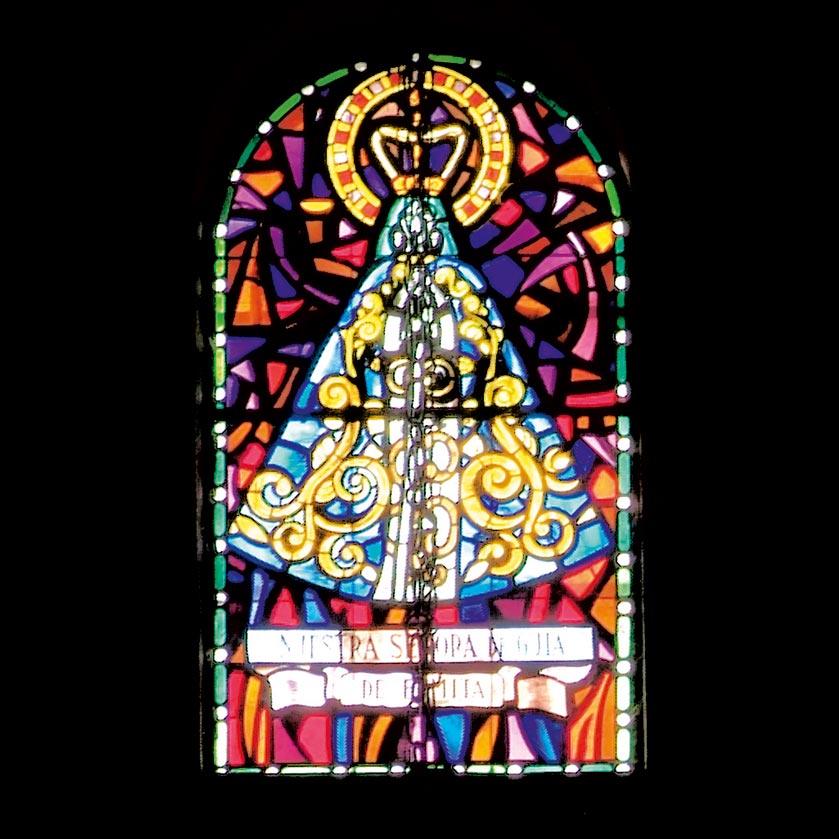
Finally, the grand rose window on the north facade features 12 rays dedicated to the twelve Apostles. These windows thus expertly follow Galo Ocampo’s unique blend of Modernist design and the intermingling of indigenous elements, producing a uniquely hybrid mix of Filipino and Western motifs that glorify the Marian devotion in the brilliant colours and bold patterns of centuries-old techniques of cathedral stained glass design. ![]()
This article first appeared in BluPrint Vol 3 2010. Edits were made for Bluprint online.
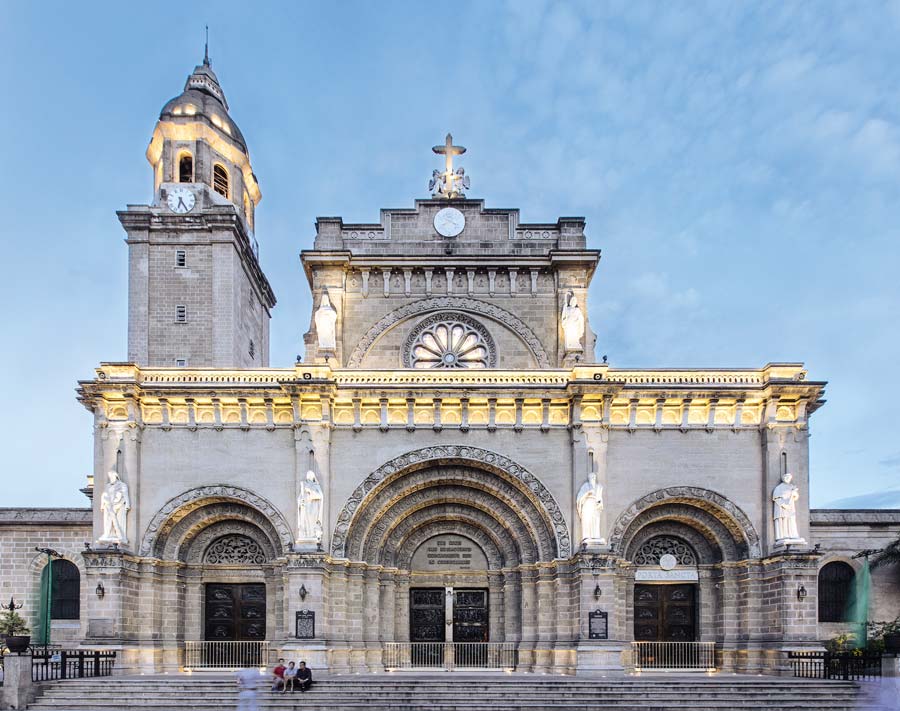
Photographed by Zac Moran


